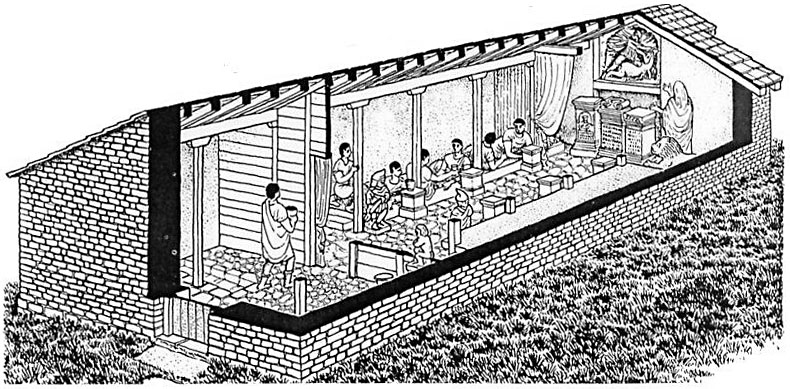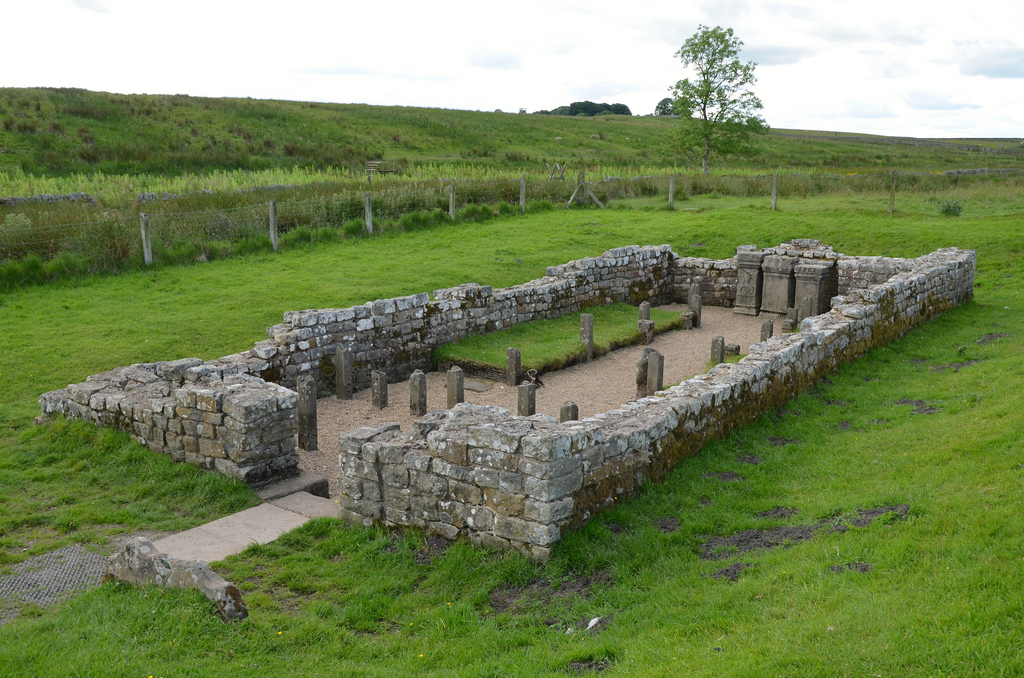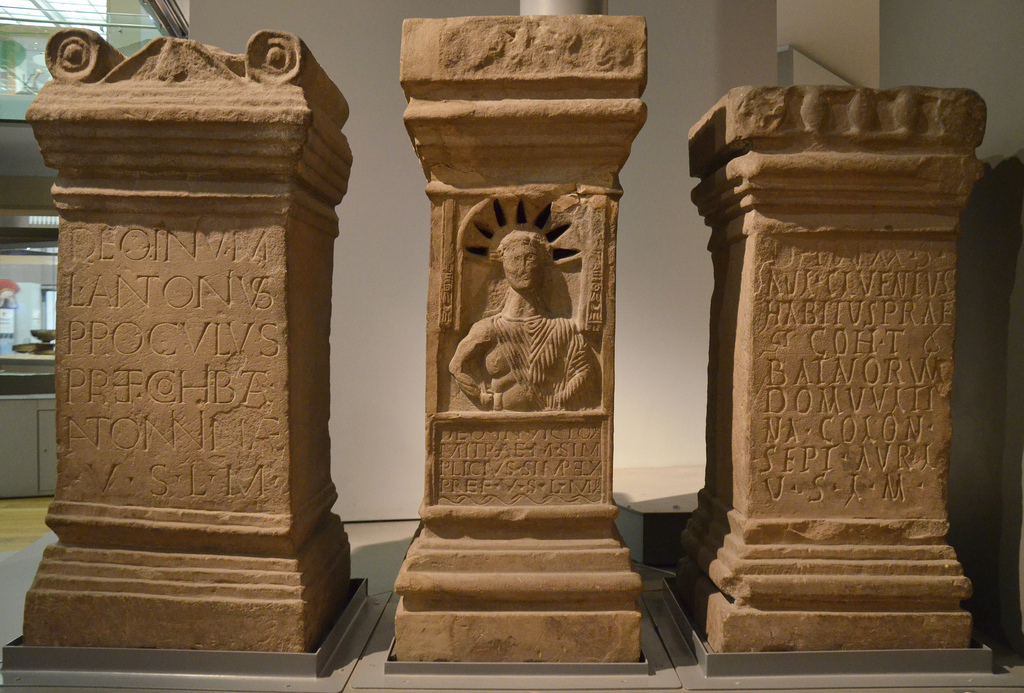The temple, dedicated to the worship of Mithras and known as a mithraeum, was built by soldiers based at nearby Carrawburgh Fort (Brocolita) in about AD 200. The fort is largely unexcavated and is in private ownership, but the temple has been well studied. Discovered during the dry summer of 1949 and completely excavated the following year, the temple is the second-most northerly mithraeum discovered so far (only the temple dedicated to Mithras at Bremenium –CIMRM 876– is further north). Several other mithraea are known to have existed along Hadrian’s Wall, but Carrawburgh’s is the only one that can be seen today.

The first mithraeum to be built on the site was erected early in the 3rd century AD and was of a small size. It was later altered several times before being demolished early in the 4th century, quite possibly by Christians who tended to see Mithraism as a threat. Like most other mithraea, the Brocolitia temple was built to resemble a cave. The first building was around 5.5 metres wide and 8 metres long and contained the usual anteroom and nave with benches on either side of a central passage on which worshippers would recline during ceremonies. At the far end of the nave was a platform containing the altars with, behind them, a sculpture depicting Mithras capturing and killing the primaeval bull in a cave. The worshippers had a complex system of 7 grades of initiation, with ritual meals.
The building was expanded to 11 metres length in a second stage about AD 222 with longer side-benches and statues of Mithras’ attendants, Cautes and Cautopates. Further rebuilding and interior redesign took place during the course of the 3rd century. The temple was destroyed in AD 296-7, then reconstructed at the turn of the 4th century. In the third sanctuary stood three fine altars dedicated to Mithras by commanding officers of the Roman Army unit stationed there, the First Cohort of Batavians from the Rhineland. One of the altars has a notable relief of Mithras with a radiate crown pierced forming openings through which a lamp placed in the recess at the rear would light up the rays. Rituals, including sacrifices, would be conducted in this altar area where two pots with the skull of a fowl and two lumps of charcoal were found. In addition, four little altars lay along the edge of the side benches.
The mithraeum was destroyed for good around AD 330. The statues of Cautopates and Cautes were deliberately destroyed and disfigured while the relief of the bull-killing was removed, leaving only one broken fragment behind. There were also other traces of deliberate desecration. Visitors to the Carrawburgh site today can see the stone temple in its final 4th-century phase. Following the excavations in 1950, the original altars, statues and timber posts were replaced by concrete copies. All the original material is now in the Great North Museum in Newcastle.
PORTFOLIO







Links:
- English Heritage
- Wikipedia
- Turtellian.org
- Roman Temple of Mithras May Align with Sun on ‘Jesus’ Birthday'” Live Science, January 2, 2018.

Carole,
Continues to be fantastic!
LikeLike